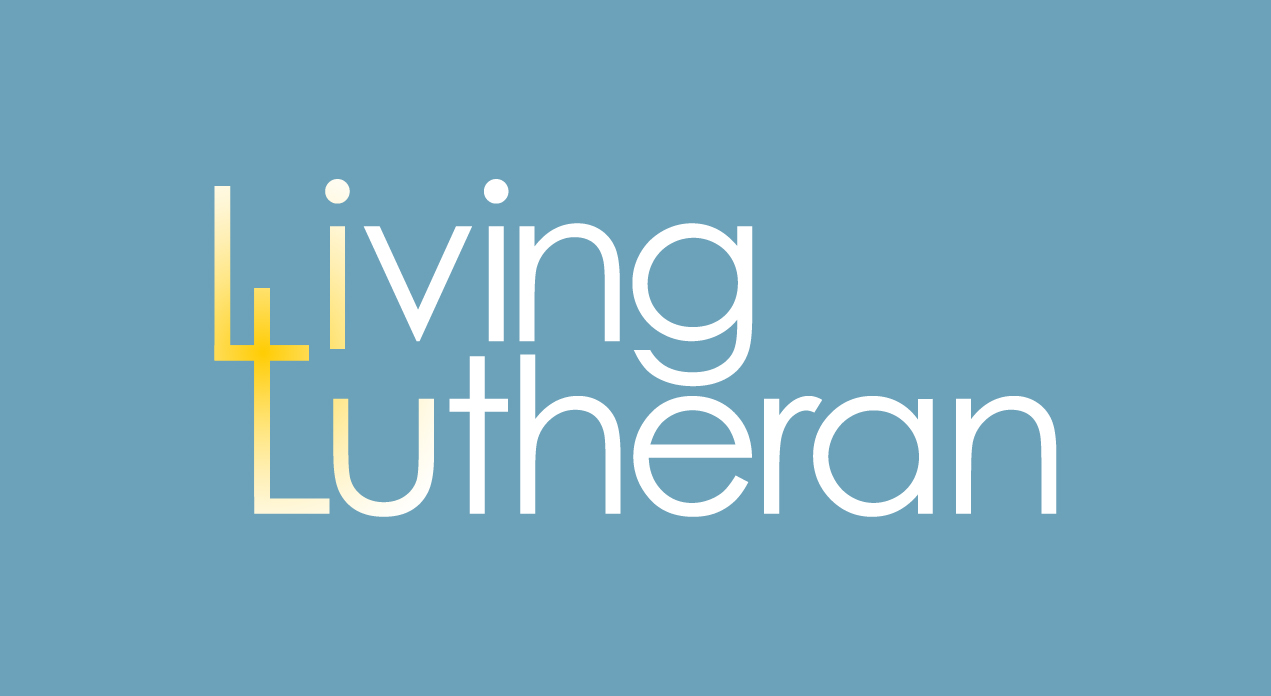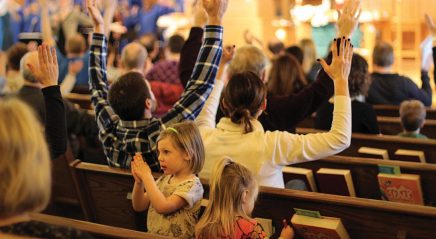Two years into a global pandemic, the toll on human life and livelihood is undeniable, and the toll on mental, emotional and spiritual health is no less profound. Enormous shifts in the way we work, gather and worship have left many people reeling.
Julie Stevens, once a nurse practitioner and now director of contemplative practices at Gloria Dei Lutheran in Rochester, Minn., said that this challenge to human health and well-being is also an invitation to the church. “We see so much anxiety and angst,” she said. “As a spiritual community, how can we be a resource?”
For a number of ELCA communities and leaders, contemplative practices offer just such a resource for people who are weary, overwhelmed or simply searching for something more—a different way to encounter God in a time when so much is suddenly different.
Perhaps you’ve heard these common phrases associated with mindfulness: “Let go and let God” or “Don’t just do something—sit there!” But how do we let go or sit still when we are surrounded by constant pressure to achieve, accumulate and act?
That’s where contemplative practices come in—concrete, specific activities and exercises designed to facilitate “a direct experience of God’s presence, of divine love,” said Ian Hill, pastor of St. Mark Lutheran Church in Hamilton, N.J., where he has taught a weekly mindfulness class since 2016.
The new year is often a time when we open ourselves to new experiences. Perhaps now is a time to consider contemplative practices for yourself, your congregation or your community. In a time of deep change and uncertainty, such practices can bring body, mind and spirit together to engage in what Stevens calls “a heart encounter with God.”
To get you started, several Lutherans with experience leading and participating in contemplative ministry share advice and tips below, as well as reflections on what these practices have meant in their lives.
Contemplative practices are both ancient and new—and authentically Lutheran!
Practices such as silent meditation, centering prayer, walking a labyrinth or yoga may feel unfamiliar to some Lutherans, but contemplative practices have a long history within Christianity.
The Gospels describe Jesus going off alone to pray and be in God’s presence. Some early Christians, the so-called desert fathers and mothers, withdrew to isolated areas to dedicate their lives to various contemplative practices. Martin Luther reportedly spent four hours per day in prayer.
And in more recent decades, Catholic and Protestant theologians such as Thomas Merton, Howard Thurman, Richard Rohr, Cynthia Bourgeault and Barbara Holmes have popularized contemplative Christian practices in the United States that draw on both Christian and non-Christian traditions, such as Zen meditation or yoga.
Hill’s meditation group, Peace of Mindful, is rooted in Buddhist practice, and he is clear that the ministry is “interfaith work.” But he also finds strong support for meditation in Lutheran theology, including Luther’s sacramental understanding of divine presence “in, with, around, under” ordinary human and earthly matter, which reminds us that we are part of something bigger. Luther also described sin as a state of being curved in on the self, an anxious preoccupation remedied only by grace.
Hill likened the ego-death of meditation to the apostle Paul’s reflection “It is no longer I who live, but it is Christ who lives in me” (Galatians 2:20).
“Meditation at its root is about letting go of the ego,” Hill explained. He likened it to the apostle Paul’s reflection “It is no longer I who live, but it is Christ who lives in me” (Galatians 2:20) and to John the Baptist’s declaration that “[Jesus] must increase, but I must decrease” (John 3:30).
Luther further insisted that in baptismal life we die and rise with Christ every day, an idea that resonates with Hill’s concept of meditation. Christians, he said, understand that “we let go into something, and what we experience is that we’re held.”
This experience is amplified by participating in a group, something Hill considers an expression of the communion of saints: “It’s easy to think of meditation as something you’re doing alone, but you’re not.”
For members of Peace of Mindful, the silence of meditation isn’t just an absence of sound but a presence shared by the whole group, like the presence of a friend who sits with you wordlessly at your most difficult hour. “We are here with each other in the sitting,” Hill said. “It’s a palpable kind of community.”
You can start anytime—and there is a practice for every personality.
The Looking Within Center at Gloria Dei, which Stevens now directs full time, started small. In 2016, Stevens—then part of the congregation’s music ministry—offered a decluttering class based on the work of Marie Kondo for about a dozen members, who then realized the practice could be applied to their inner lives too. Now Gloria Dei offers prayer classes, monthly “reset” mini-retreats and a Facebook page called “Looking Within Collective.”
For newcomers to contemplative practice, Stevens recommends lectio divina, a slow and reflective reading of Scripture. “Take a short passage and read it several times, with silence in between,” she said. “Then ask yourself: ‘What is God saying to me? What do I need to hear?’”
An alternative is the Daily Examen. Developed by Ignatius of Loyola, a Spanish priest and theologian, this simple exercise involves looking back on the day, asking where you saw God and naming one example. It teaches you to recognize God’s presence in your life.
Emily Meyer is an ELCA pastor and director of the Ministry Lab, a resource center at the United Theological Seminary of the Twin Cities in St. Paul, Minn. She said one of the benefits of the contemplative practices taught by the lab is that they’re mobile: “You can engage in it anywhere. Your breath is something you carry with you wherever you go.”
Meyer teaches an introductory mindful-breathing exercise that encourages people to focus on “inhaling the breath of God, exhaling and letting go of what I don’t need.” Given that the purpose of breathing is to take in life-giving oxygen and release carbon dioxide, mindful breathing, she said, is “both physiological truth and spiritual practice.”
Martha Newfield, a member of the Christian Mindfulness Community at Lutheran Church of the Resurrection in Cincinnati, was raised as a Baptist but turned to the Lutheran faith when she had breast cancer. Resurrection was the closest church to her house, but beyond proximity, she said, “I was searching for something.”
One benefit of the contemplative practices taught by the lab is that they’re mobile: “You can engage in it anywhere,” said Myer. “Your breath is something you carry with you wherever you go.”
Fellow member Doris Jancha noticed Newfield reading a book by Franciscan priest Richard Rohr, and the two launched a contemplative study group. Now Resurrection also offers a monthly contemplative worship service and a yoga group. Its leader, Sarah Pritts, has taught yoga as a Christian practice for two decades, including seven years at Resurrection. Newfield said the congregation’s mindfulness ministry “has been such a joy to me—a deep and thoughtful path.”
Jancha agrees: “It’s so encouraging to pray together, meditate together and talk about our struggles and joys.”
Newfield, Jancha, Pritts and Nicole Kelly, a pastor of Resurrection, all agree that intention is key to contemplative practices—and that setting aside space, time and intention can look different for different people.
Pritts’ yoga mat becomes a space for her to practice physical lectio divina. She reads Scripture, goes through a series of asanas (yoga movements) and reads the text again to grapple with its meaning and its implications for her life and calling in the world. “There’s something about that squishy rectangle,” she said, referring to her mat, “that makes it a gentle place to practice, contemplate and ask for help, in community—to receive grace.”
Jancha finds a similar grace in walking a labyrinth: “Something happens to stop the chatter in my brain.” She also has a corner set aside with her meditation chair and books. “It’s my place,” she said.
Kelly often practices centering prayer in the afternoons in Resurrection’s empty sanctuary, using a free meditation timer app on her phone, she said, to “hold the boundaries of time for me.” But she has also prayed in her car while waiting to pick up her kids. Kelly urges people new to contemplative practice to “try different things … give it some time.”
Various meditation practices may resonate with different people—or at different points in people’s lives. What’s important, Kelly said, is “the willingness to try, and to trust that God is in every expression.” In different practices and in different seasons, God still shows up.
If at first you don’t succeed … you’re probably doing it right.
“People are more contemplative than they realize,” Stevens said. Nevertheless, that doesn’t mean contemplative practice is easy—for newcomers or long-time practitioners.
Newfield recalled a piece of wisdom that has guided her contemplative practice: “It’s not how it feels, but how it becomes.”
She and her fellow church members have discussed the common experience that contemplation is “not necessarily a feel-good practice [in the moment]. … Sometimes you sit there and you try to be open, and then you go back to squirrel brain. It can be frustrating, thinking, I didn’t do it better or wasn’t calmer. … It can feel like a waste of time, not getting anywhere.” However, Newfield often finds that afterward she considers parts of her life in a new light.
To those who doubt their capacity to sit still, Meyer points out that outdoor and movement-focused practices can also be contemplative. While serving as pastor of Holden Village, a Lutheran retreat center near Chelan, Wash., Meyer taught dance as one form of contemplative practice. Whatever the activity, she said, “if it is your intent to spend time with God—to be attuned to God in that moment—that is contemplative prayer.”
It’s not just navel-gazing: Contemplation as compassion, justice and outreach
One common misconception of contemplative practices is that they are exclusively self-focused or inward-directed. Hill said the opposite is true: “These practices are not about us. They are for the good of the world.”
The members of his meditation group focus on compassion, both a Christian and a Buddhist principle, to better practice “loving-kindness” with those around them. Trusting God in the ups and downs of daily life, Hill said, teaches the brain new patterns of relating to others. Long after the meditation ends, “the fruits happen in work, family and worship,” he added.
Kelly agrees: “Like the infinity sign, [it’s about] going out into the world and coming back to be refilled, and then to pour back out into the world again.”
Meyer said one outgrowth of this idea is contemplative activism. Worship and prayer—including contemplative practices—have long been part of faith-based justice work. Howard Thurman inspired Martin Luther King Jr. to spend two weeks in contemplation during the civil rights movement. In the Twin Cities, where Meyer lives and works, religious leaders organized in-person and online opportunities for prayer and contemplation during the 2020 protests that followed the murder of George Floyd.
Like Hill, Meyer finds that contemplation and active love for the neighbor go hand in hand: “If I am listening to the God within me, I am listening to the God in you.”
Trusting God in the ups and downs of daily life, Hill said, teaches the brain new patterns of relating to others. Long after the meditation ends, “the fruits happen in work, family and worship.”
In her role with the Ministry Lab, Meyer interacts with many Protestant congregations that have found contemplative ministries to be effective community outreach. Labyrinth-walking or Taize-style contemplative services “tend to be places where young adults are connecting—and perhaps surprisingly, families too, since these activities tend to be shorter and more physically engaging.”
Some participants in St. Mark’s Peace of Mindful group are parishioners, including some who joined the church through the group, but the majority are members of the wider community—diverse in culture, age, race and gender—who find that this ministry creates a supportive, authentic community without judgment or expectation.
“People notice: ‘Your church does this,’” Hill said. “People are hungry for different kinds of spiritual practice and are drawn to St. Mark as ‘a place where I can be.’”
At Resurrection, some members are more involved than others, but mindfulness ministry can be an entry point to the congregation, Kelly said. Aware that the world is hungering for contemplative practices, the congregation deliberately named its facility the Christian Mindfulness Center at—rather than of—Resurrection, which reflects the congregation’s vision of an ecumenical and community-focused ministry.
“Contemplative practice opens us up, loosens the edges of church so that the walls become permeable,” Kelly said. “We remember that we’re all in this together. What follows is the felt sense of what church is—those who are gathered.”
“You’ll meet God in a different way.”
Whatever contemplative practice you try, the Lutherans interviewed all agreed that the practice is worth the trouble—and will change you.
“There are all kinds of ways people can be in prayer and meditation, and it can be liberating,” Hill said.
Such liberation, Meyer has found, extends from within the self, through congregations to whole communities. “If Lutherans could disengage from a very Western, Northern European mindset of always expecting more out of our clergy—and one another, and ourselves—we might develop a healthier, more gracious, more inviting, more Christlike environment in our congregations that would attract stressed-out, overworked, overstimulated people like moths to a flame,” she said.
When in doubt, Hill shares an invitation he once received: just try it. “Check it out and see if it’s true,” he said. “Do it and pay attention. You’ll meet God in a different way. … It’s profoundly good for physical and mental health.”
Meyer agreed: “We’re built to be in relationship with God. There is no downside.”
Learn more about contemplative practices
Web resources:
The Ministry Lab: theministrylab.org/contemplative-practices
Looking Within (Gloria Dei Lutheran Church, Rochester, Minn.): gloria-dei.com/contemplative-practices
Christian Mindfulness Community (Lutheran Church of the Resurrection, Cincinnati): lcresurrection.org/contemplative
Center for Action and Contemplation: cac.org
Shalem Institute for Spiritual Formation: shalem.org
Books:
The Wisdom Jesus: Transforming Heart and Mind by Cynthia Bourgeault (Shambhala, 2008)
Joy Unspeakable: Contemplative Practices of the Black Church by Barbara A. Holmes (Fortress Press, 2017)
The Daily Reader for Contemplative Living: Excerpts From the Works of Father Thomas Keating by Thomas Keating (Continuum, 2009)
Discernment: Reading the Signs of Daily Life by Henri Nouwen (HarperOne, 2015)
Dancing Standing Still: Healing the World From a Place of Prayer by Richard Rohr (Paulist Press, 2014)








